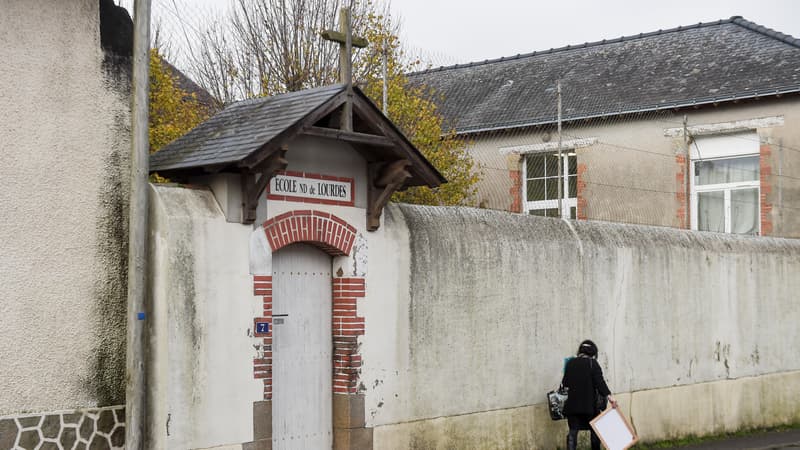A controversy that revives the debate on private schools. The newly appointed Minister of National Education, Amélie Oudéa-Castéra, has drawn the ire of unions and teaching staff by justifying her choice to educate her children at the prestigious Parisian center Stanislas for the “packages of hours that have not been seriously replaced” in the public.
Since this publication, voices have been raised to denounce the operation of private schools in France. Considered too elitist and conservative by some, these establishments are also singled out for their financing method, which relies heavily on public money. On Sunday, January 14, the SUD-Education union called for the “end of public financing of private education” and “nationalization.”
Schools under contract with the State
To understand how private education works in France, we have to go back to the post-war period. At the time, private schools were in poor condition, weakened by the elimination of subsidies they received during the Vichy regime. In the 1950s, the future of these establishments sparked political debates, until the vote of the Debré law in 1959, which laid the foundations of the modern private education system.
This system, based on contracts between schools and public authorities, imposes state control on private establishments in exchange for the financial aid granted to them. Therefore, they are obliged to teach the programs defined by National Education and cannot discriminate in the reception of students.
In 2022, private schools under contract brought together more than 2 million students, that is, 17.6% of the school population, in just over 7,500 establishments (compared to less than 2,000 outside contract), according to a report of the Court of Accounts. That same year, the State granted 8 billion euros in credits to private schools to finance, in particular, the remuneration of the 142,000 teachers who work there (and who have the State as an employer even if they are not civil servants), but also the day school. package paid to secondary schools and intended to cover school staff costs.
More than 75% public financing
In detail, state financing of private establishments under contract represents 55.2% of total financing at the first level (kindergartens and primary schools) and 67.2% at the second level (middle and high schools). “This percentage of financing differs little from that observed in the case of public establishments, of which the State provides 59% and 74% of the financing, respectively,” underlines the Court of Auditors.
But public money funds the private sector even more, with local authorities accounting for 21.5% of contract school funding in primary education and 9.6% in secondary education. That is, nursery and primary schools are 76.7% financed with public funds, compared to 76.8% for middle and secondary schools (96.3 and 95.7% respectively for public education). The rest comes from households themselves, companies or other private financiers.
In 2020, for example, combined first and second levels, the total budget for private education amounted to 21.4 billion euros, of which 7.8 billion from National Education, 1 billion from other ministries, 2.7 billion from local authorities, 665 million from other public administrations. , 4.4 billion households and 4.8 billion companies and other private financiers.
Few controls
In its report published in June 2023, the Court of Auditors does not question this essentially public financing, but regrets the lack, or even the absence, of controls of establishments by the State. According to the Sages, educational control “is exercised in a minimalist manner,” while administrative control “is only occasionally mobilized when a problem is reported.”
Finally, the rules that must be followed to allow the State to verify the destination of its financial contribution “are not known nor, a fortiori, applied by the various interested parties.” The Court indicates, for example, that “there are rare establishments that have indicated that they have sent their accounts to the departmental or regional director of public finances within three months following the close of the financial year.” What they are supposed to do.
“Furthermore, the regional directors of public finances contacted indicated that their services did not carry out these controls,” continues the Court of Auditors. Before concluding: “This non-application of the texts is not admissible and must be corrected as soon as possible.”
Source: BFM TV


